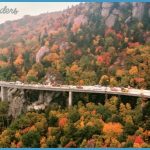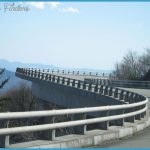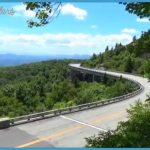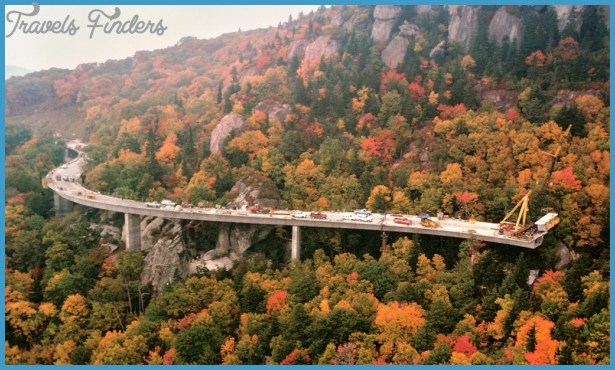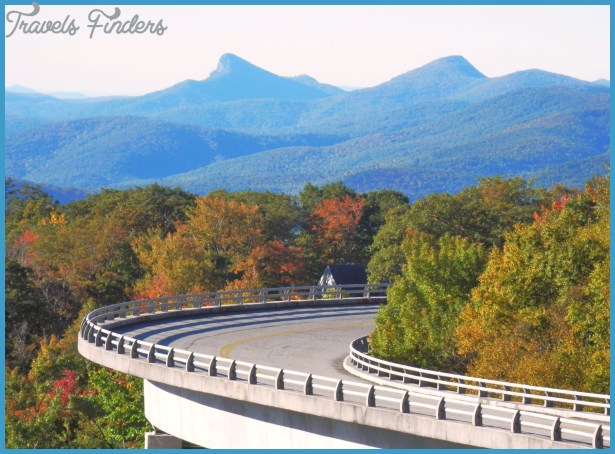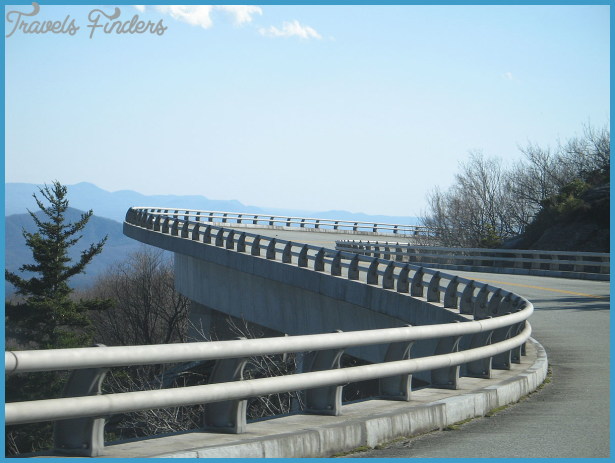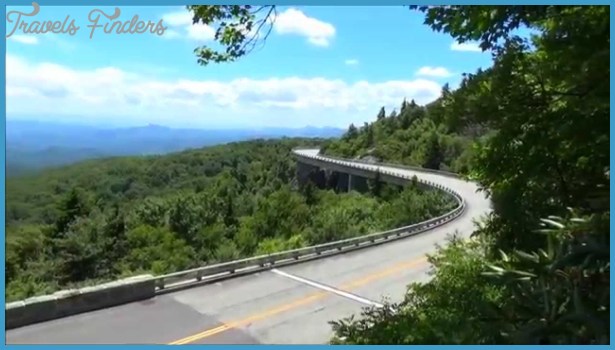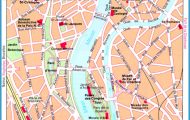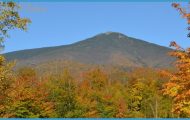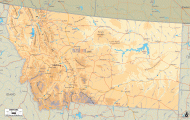IT TOOK FIFTY-TWO YEARS to build the Blue Ridge Parkway. Construction began in 1935, and by 1967, the 469-mile road was completed except for a short section around Grandfather Mountain. This missing link, as it became known, passed through a particularly sensitive area on Grandfather’s south side, where huge boulders and rock outcrops made road construction impossible without seriously damaging the fragile environment.
The parkway people had wanted to build the road at a higher elevation, but Hugh
Morton, Grandfather’s protective owner, wouldn’t allow it. He claimed the upper route would irreparably harm the mountain’s scenery and ecology, comparing the road’s construction to taking a switchblade to the Mona Lisa. But the lower route, through Linn Cove, presented much the same problem. The engineers developed a solution that avoided the delicate terrain altogether. They built a viaduct that followed the contours of the slope and rested on carefully placed support piers.
The goal was to do as little harm to the mountainside as possible. Workers covered rocks under the viaduct to protect them from damage, and they only cut trees that were directly in the path of the road. The most remarkable aspect of the construction was that the roadway was built from the top down. Using computer-controlled precast segments (153 in all), work crews constructed the road piece by piece. After the first section was set, a crane lowered the next segment, where it was epoxied into place. High-tension steel cables ran through all the segments, rigidly securing everything together. Once they had assembled 180 feet of the viaduct, workers then constructed a support pier by lowering the materials from above. The only work that was performed from below was drilling the foundation holes for the piers. The completed viaduct is about a quarter-mile long and rests on seven support piers.
When the Linn Cove Viaduct opened in 1987, it immediately became the most popular section of the entire parkway. Stop at the Linn Cove Visitor Center at the southern end of the viaduct to see exhibits and obtain detailed information about the viaduct’s construction. A portion of the Tanawha Trail leads from the visitor center directly under the viaduct.
Glen Falls, in Nantahala National Forest, falls in three distinct drops. This view shows the cascading middle drop, considered by many the most scenic.


